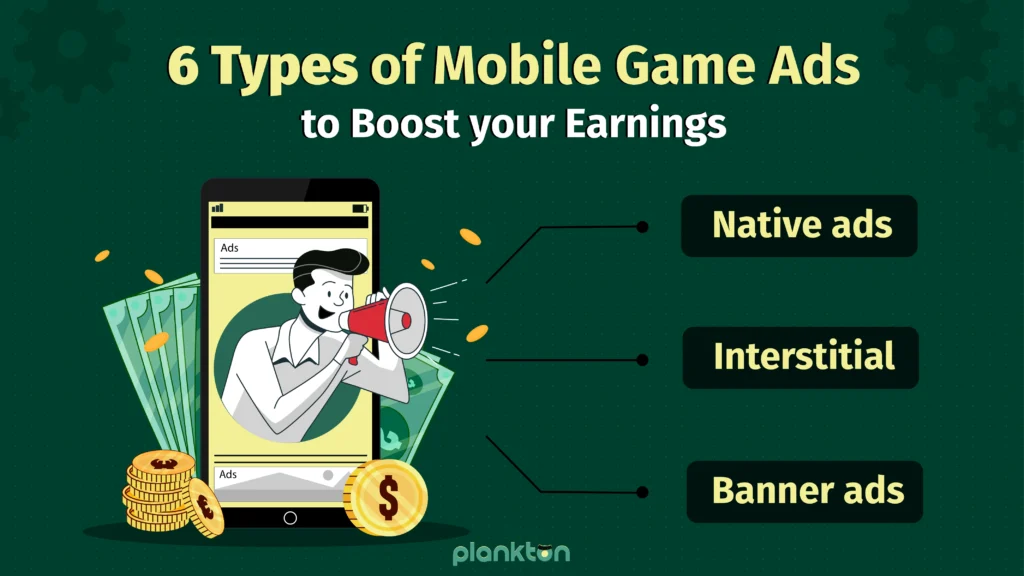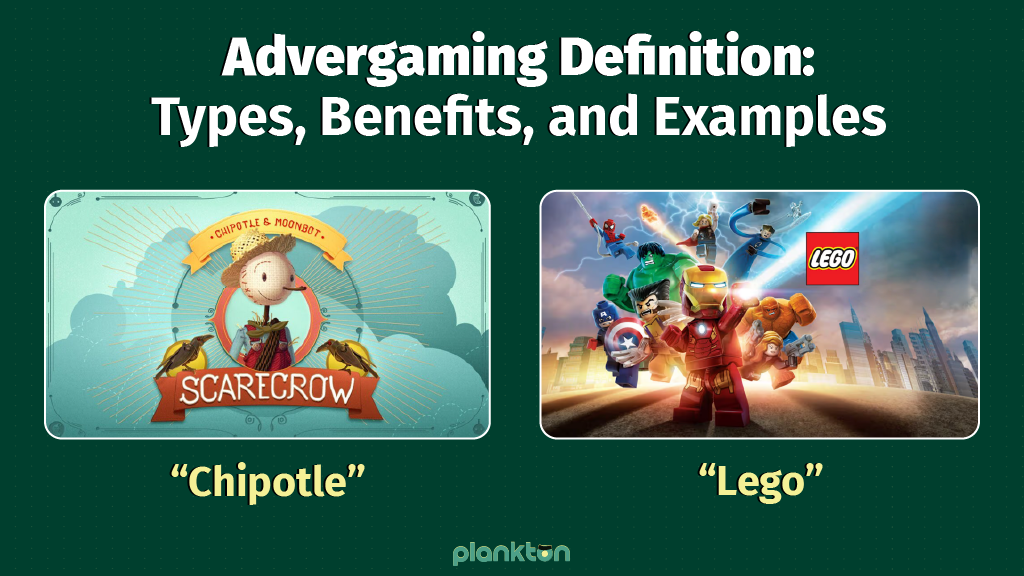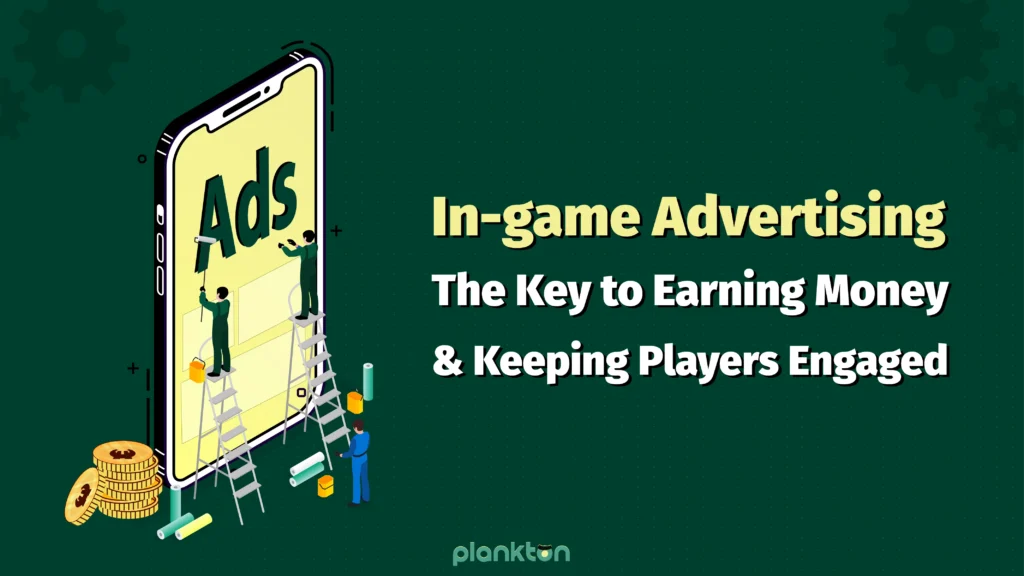Displaying ads in mobile games is a common way to generate revenue for developers. It’s also possible to combine this strategy with in-app purchase to boost your earnings. But not every player wants to spend money on the game.
In this situation, you can use different types of mobile game ads to turn your players into a steady source of income. I’ll give some tips on how to implement them to achieve balance, that is, remaining loyal to the gameplay and keeping players happy at the same time.
Additionally, I’ll explain why there is no best ad format for everyone and how you can find your ideal format. And finally, you’ll learn why it’s not wise to employ just one monetization model. You’ll find out how to monetize every type of your user base.
Why Should you Implement In-game Ads
Let’s face it—no matter how amazing your game is, it won’t thrive without a sustainable economy. Game studios and developers have bills to pay, and ensuring steady revenue is crucial for survival.
While your game idea and gameplay are important, monetization is just as critical. Selling in-game assets is one way to generate income, but relying on a single strategy can limit your potential.
In-game ads are an effective way to monetize non-paying players while diversifying your revenue streams. To implement ads successfully, it’s important to understand the different ad formats available and choose the ones that best suit your game.
In this blog post, I’ll explore the most common ad types in mobile gaming, helping you make an informed decision about which formats work best for your project.
Let’s get started!
What Are the Types of Mobile Game Ads?
There may be other ad types in the market, but consulting with game marketers, I’ve created a list of the most popular types of mobile advertising that help you generate income for your mobile game:
Banner Ads
A banner ad is a small banner that sits on the top or bottom of a mobile game. This ad type can be static, animated, or interactive and remains on the screen as long as users are in a session. Players can tap on it to get more information, or they can close it.
Banner is a classic format that has been used for years in the world of the internet.
Why is it a good option?
It’s easy to implement and is ideal for casual and hyper-casual mobile games. Banner ads (should) take a small place on the screen with a fixed dimension. Additionally, some ad networks allow you to create a smart banner, setting relative sizes that change on every device.
It’s also possible to change the content and show more ads to produce income. Other than that, you can set an option for players to close it permanently by paying a certain fee.
Aesthetically, you may not be happy to see an extra element in your mobile game. So, have your game and the game flow in mind before using it.
That’s not the only flaw with banner ads.
I can tell you that the eCPM is considerably low. According to some reports in the United States, the figure is $0.6 or less, while the rewarded ad format generates approximately $13 on average. Despite the low income, advertisers use it to boost brand awareness as it gets high impressions.
Overall, if the advertisers are happy with their advertisement, they’re more willing to pay more.
Other use cases include special offers, getting traffic, selling a product or service, etc.
eCPM, or effective Cost Per Mille is a metric that shows you how much you’re earning from one thousand impressions.
Lexicology lesson for today: Mille means one thousand in Latin. 😀
Let’s go to the second ad type that will help you generate revenue for your mobile game.
Interstitial Ads: Nearly Perfect
It’s a kind of ad that doesn’t interrupt the natural rhythm of game play. You can leverage the pauses between levels to show ads to players and they don’t get mad very much (or at least they get mad less!). Therefore, you can protect players from an awful user experience.
It’s a proper format among marketers too. Because they can use a big screen and let their creativity flow to get users’ attention. In terms of impressions and conversions, it’s one of the best options you have.
Why does this ad type work?
You want to keep your players happy while showing ads to make money. Interstitial ads are the perfect way to have a mobile game that is entertaining for players, lucrative for marketers, and fills your pocket with money.
You might say, “I’ve found the right format; let’s implement it right now.”
Please wait. You know that nothing is perfect, and interstitial ads are no exception.
There are downsides to this kind of advertisement. It’s interesting to know that a good number of clicks come from users that can’t close the ad. Players try to get rid of it by swiping or tapping, so the result won’t be as desirable as expected for marketing experts.
You need to put down some extra work to design a good ad that’s really engaging and makes a profit for your advertisers. I recommend getting help from a professional designer who is familiar with mobile games and letting her/him do the magic.
Pro Tip: Don’t forget to use it wisely—I mean, put interstitials between session breaks in the game, and you’re good to go.
Rewarded Ads: Everyone’s Favorite
As the name suggests, players earn a reward by watching an ad. The reward is usually something like in-game items, in-game currency, boosts, or any extra asset that is valuable to players. It brings a high view rate and is a favorable ad format among marketers.
This ad type is usually in video format, but other formats are also available. Rewarded banners and rewarded interstitials are alternative formats where players earn rewards for engaging with static or full-screen ads, offering a similar experience to rewarded videos but without video content.
Why is it a good choice?
As the player chooses to see the ad and it doesn’t interrupt the gameplay, users are willing to watch it. It’s a win-win deal. You can show ads to players and earn money while the player is happy getting something in exchange for a few seconds.
Pro Tip: Try to “make them an offer they can’t refuse.” I mean, in order to encourage players to watch the ad, you should offer a good reward that is worth their time. The other tip, as I repeat many times here, is to keep user experience in mind and find proper moments to put the rewarded ad.
Native Ads: An Ad As a Part of the Game
A native ad is an ad type that fits into the gameplay and seems like an in-game element, not like a typical advertisement. Game developers use this type to maintain the balance between user experience and profit. If you can do it right, it’s one of the most engaging types.
Why does it work?
It’s a non-disruptive advertisement format that helps you monetize your mobile game. But don’t expect a cash printing machine.
Pro Tip: Place them strategically somewhere that needs an important action. Show them in a subtle way that doesn’t interrupt the general gameplay, and you’re all set to receive payments from your players.
Offerwall: Encouraging for Players
It’s a similar type, like rewarded ads. It consists of a wall of tasks with certain rewards. Players choose what to achieve and receive their prize when they accomplish it. The task can be a survey, a video ad, or a mini-game, and the rewards would be extra gems, coins, or a special item.
Why does this ad type work?
As there are multiple offers and rewards, players are more eager to engage. According to IronSource, offerwalls encourage players to play longer, and that means high retention rates.
It’s also a shortcut to make money out of non-paying players. Some players don’t want to pay money to gain an extra life, but they’re quite ready to buy it with their time. So, you can monetize these users by showing ads to them.
Although it’s a great choice to generate money from your mobile game, you should know that using it on iOS is not a wise choice. Apple doesn’t allow ads that lead users to install another app, so the fill rate may disappoint you.
Additionally, some ad networks don’t support offerwalls. Despite all of these flaws, you can leverage this ad format to engage Android players and make a profit.
Pro Tip: Unity recommends putting your offerwall where it gets more exposure: on the home page. Since the home screen has a lot of traffic, you have high chances of showing your offers to players and boosting your mobile game revenue.
Playable Ads: Try before Buy
As the name says, it’s a kind of advertisement that lets users play a part of a game before installing it. As it offers an interactive experience instead of watching a video or a static image, playable ads can highly engage players.
Why does it work?
As mobile gamers see the sample in action, they’re more willing to download the app. Besides that, they’re more likely to come back and use it again; that means more retention rate for you (check this article out for more info).
What Are the Types of Playable Ads?
There are two main types of playable ads: HTML playable ads, which use the game’s assets and HTML to create an interactive preview, and interactive video ads, which combine game footage with interactive elements to engage users before download.
Which In-game Ad Type Is the Best?
Nobody can answer that. It highly depends on your game, your monetization strategy, the genre, the user base, and other factors. What I can tell is that you should think about it and do research. In fact, we can’t know everything. So, after you’ve done some investigation, you have to deploy and test it to get data.
After testing several formats and analyzing the results, you can judge what’s working and what’s not.
You should be careful about implementing ads in a natural way that is not disturbing for players, at the same time lucrative enough to let the game live in the frenzy of competition.
I know I’ve said this a hundred times but believe me, sometimes we forget it.
In-App Ads and In-App Purchase
What happens if you decide to add in-app purchase to generate revenue for your game? As said before, you’re never limited to a single monetization model. In fact, using a mix of models is called hybrid monetization and is a great strategy for developers to produce income.
In addition to in-app purchase and in-app ads, you can also include a subscription model to cover almost all gamers.
How is that possible?
Let me explain. There are players called “payers.” You’ll offer in-game items, and they buy them to enhance their game experience. There are gamers who like to pay a flat fee to enjoy in-game assets via subscription.
The last group are “non-payers.” For various reasons, they’re not willing to spend money on the game. But a good number of them are ready to watch ads. This way, you ensure you’ve implemented all the possible models to go on with your game.
And now you might be thinking about using a mix of ad types.
Why not? Let’s dive into the next section, and I’ll tell you how.
Combining Ad Formats: Boost Revenue and User Experience
Mixing different ad types (interstitials, banners, and rewarded ads) within a single game can significantly boost your ad revenue—if done strategically. The goal is to integrate ads in a way that feels natural and doesn’t disrupt the gameplay experience.
On top of that, you can treat every player differently. That means you can analyze their behavior and show different ad formats accordingly. If you see that a gamer engages with rewarded ads, don’t show her/him interstitials too much. This approach would be a huge boost to user experience.
And happy gamers will lead you to gold mines.
OK, let’s get into more details.
How to Combine Ad Types Strategically
For example, you want to show three types of ads. Let’s see what you should do:
When to Use Interstitial Ads
- After key transitions or level completions (e.g., finishing a level or between matches).
- Avoid using them during intense or fast-paced moments—this can frustrate players.
Pro Tip: Use frequency capping (e.g., showing 1 interstitial every 2-3 levels) to prevent overloading players.
When to Use Banner Ads
During non-intrusive moments, such as idle screens, menus, or at the bottom of the gameplay UI (as long as it doesn’t block critical content).
Pro Tip: Keep banners subtle—small enough not to distract but still visible. Test placement to ensure it doesn’t interfere with the game experience.
When to Use Rewarded Ads
- Offer them as an optional feature, e.g., to revive the character, earn bonus coins, or get extra lives.
- Players should feel like they’re getting value in exchange for watching the ad.
Pro Tip: Clearly communicate the reward upfront to maximize opt-in rates.
These are just examples to give you an idea. You should use the ad combination technique based on your game and goals.
Final Words on Types of In-game Ads
In this article, I walked you through types of mobile game ads. We saw that there are different ad formats you can use to generate revenue from your game. Each format has its own pros and cons, and there is no best for everyone.
I’ve shared tips on when and how to use each ad type. This will help you strike the balance I’ve been emphasizing throughout this post (and probably a few others too!).
Finally, you learned that sticking to a single strategy is not smart, and you have to think about every monetization option. On this matter, I gave you some tips on how to implement in-app purchase with in-app ads to maximize your profits.
I hope this helps you with your monetization efforts.
If you have any questions, please do not hesitate to drop a comment below.



